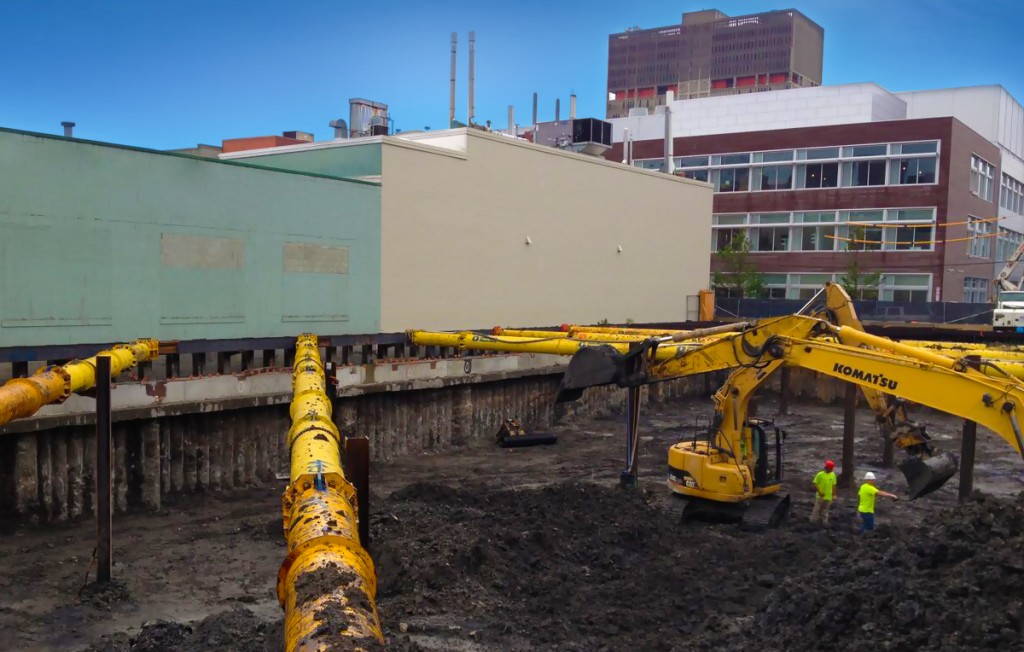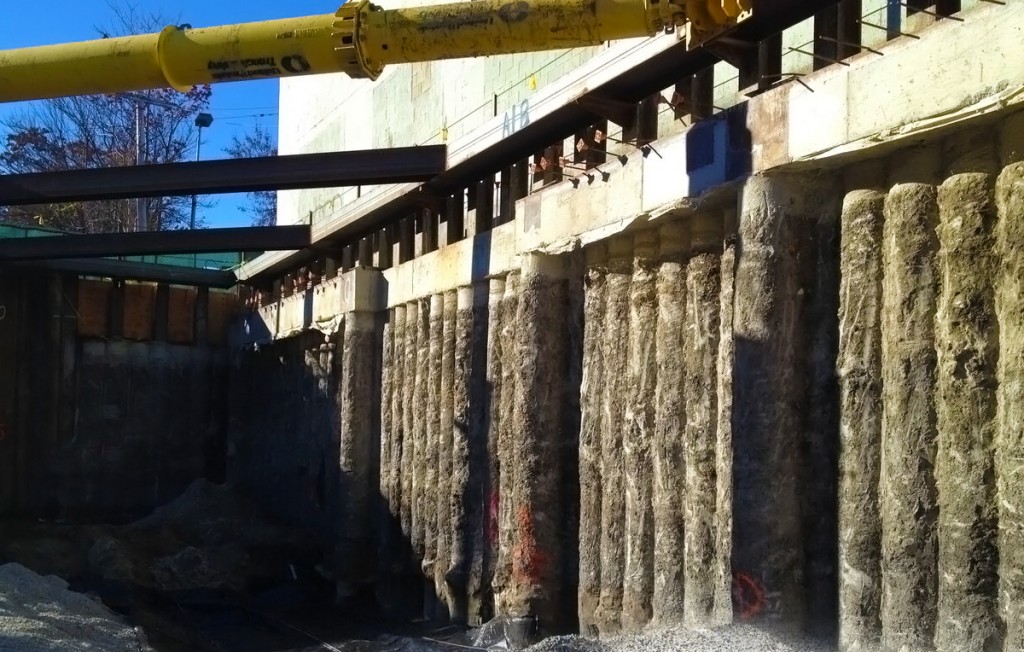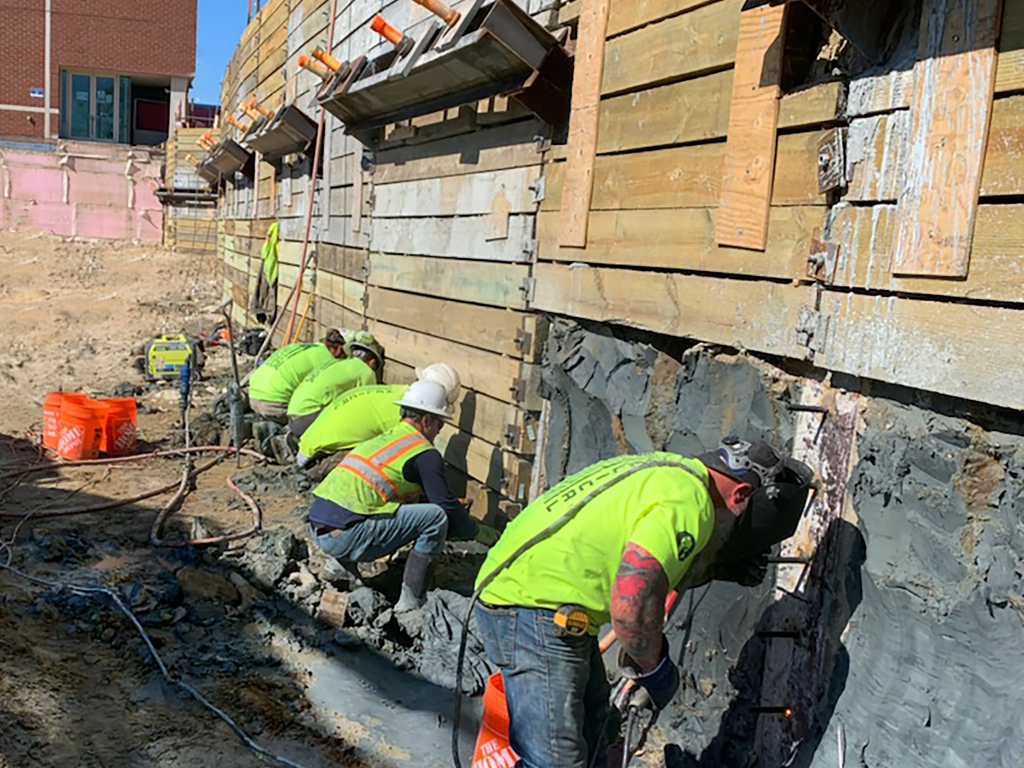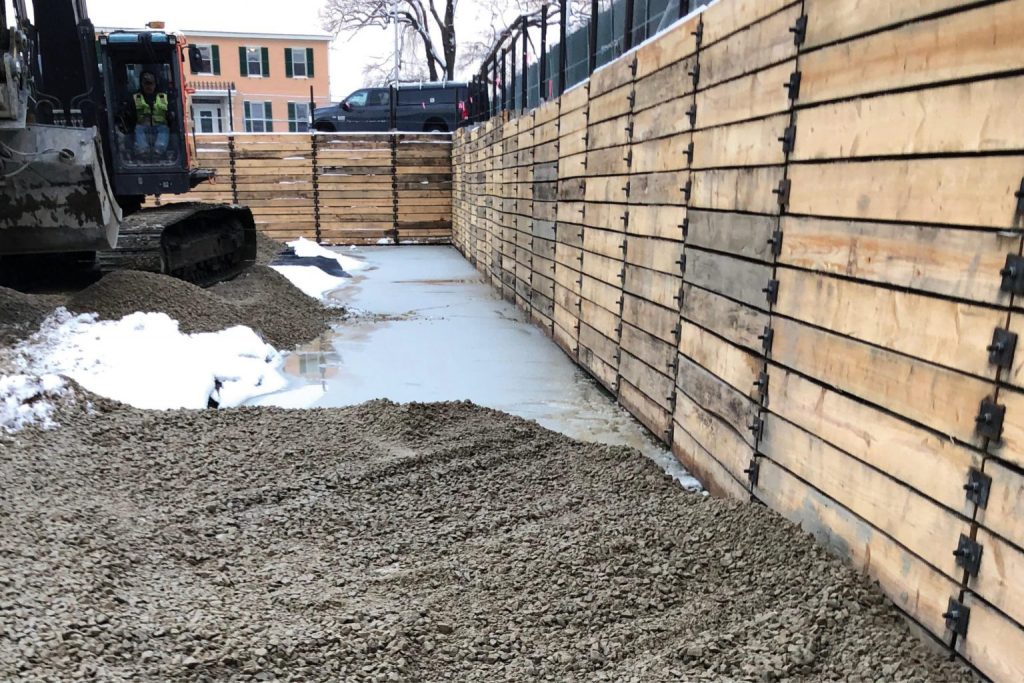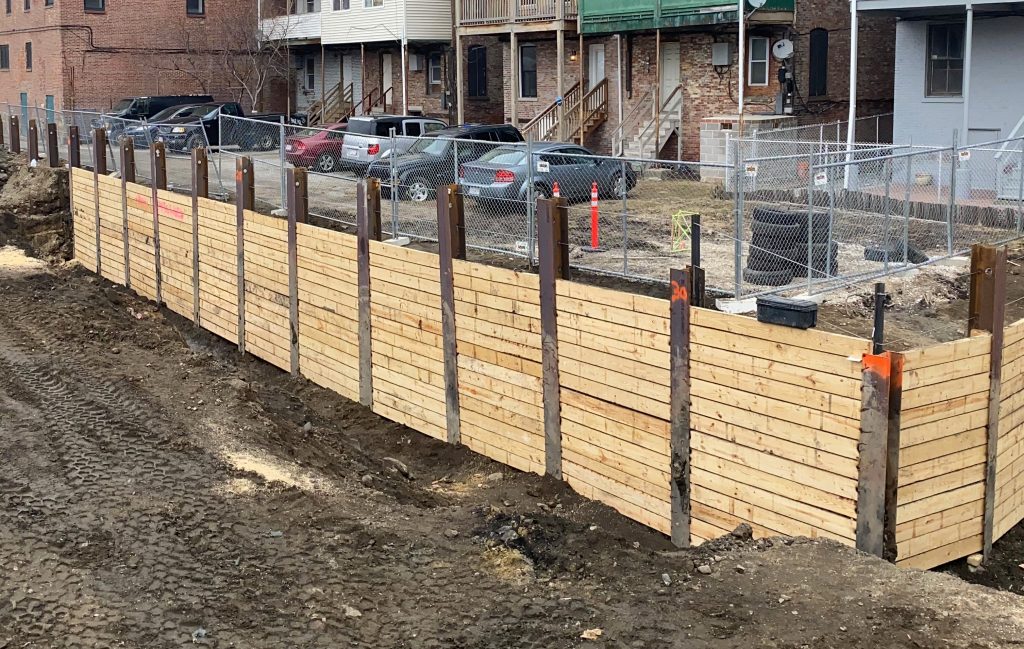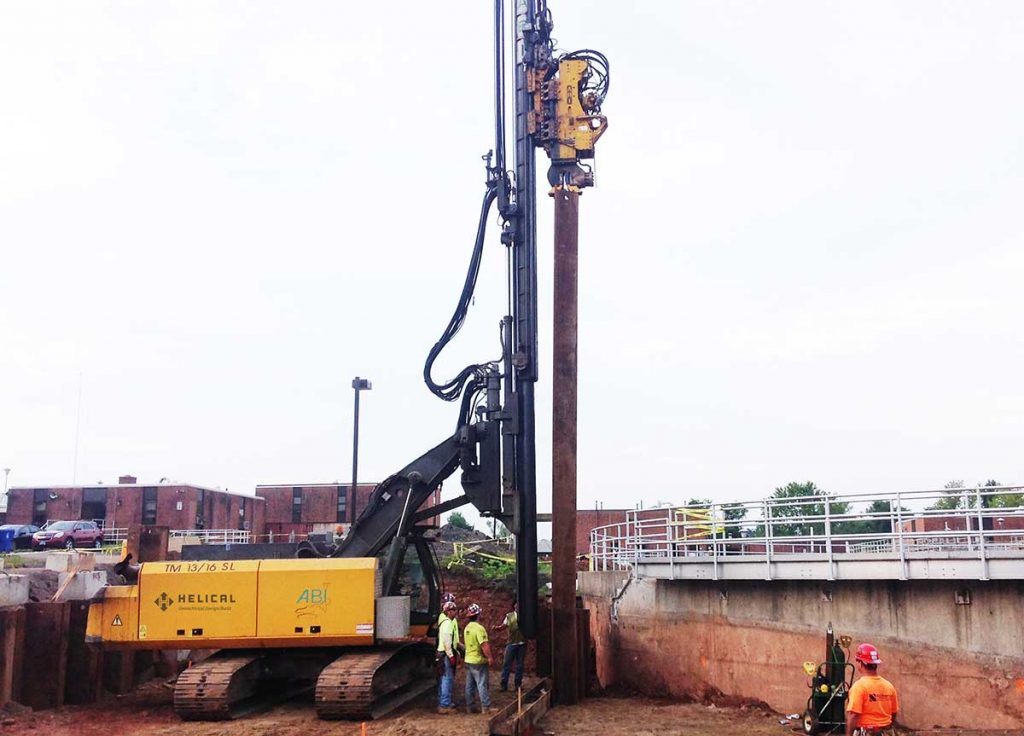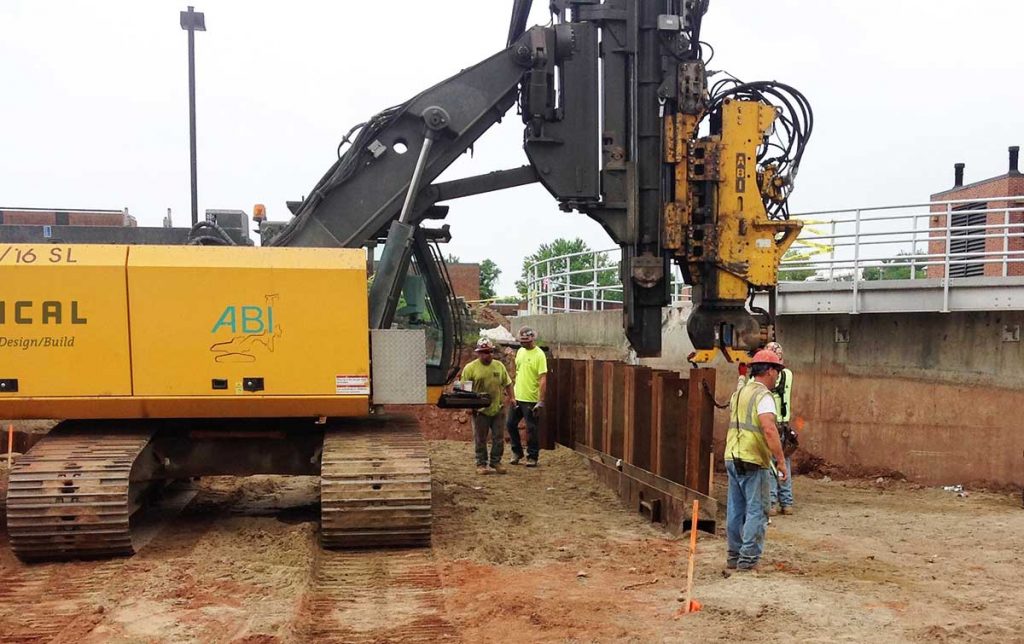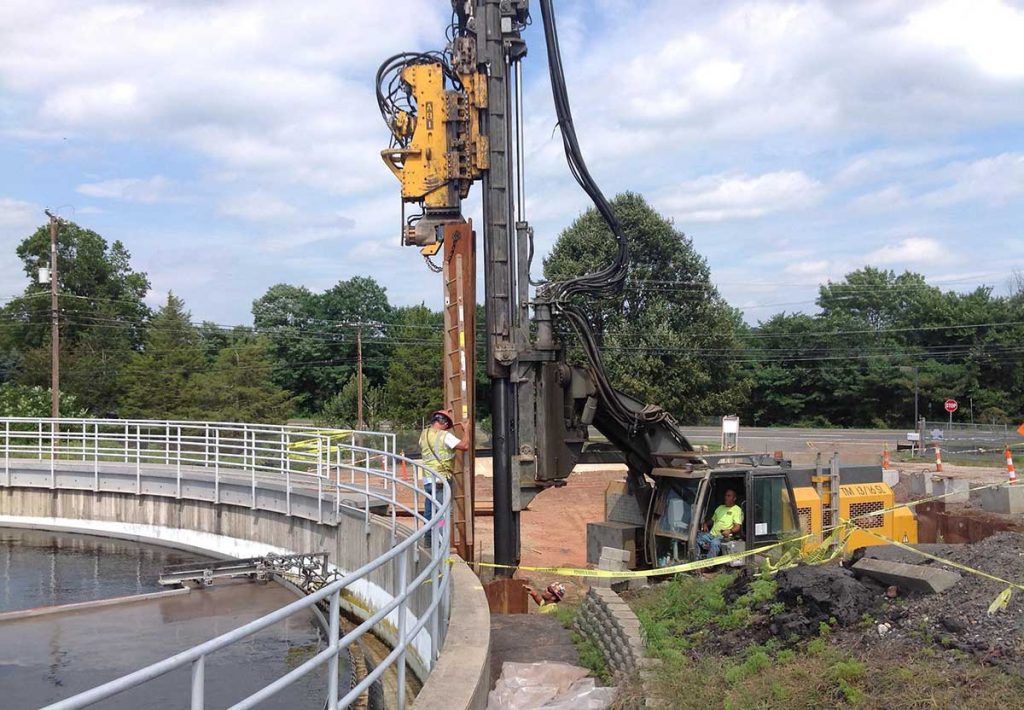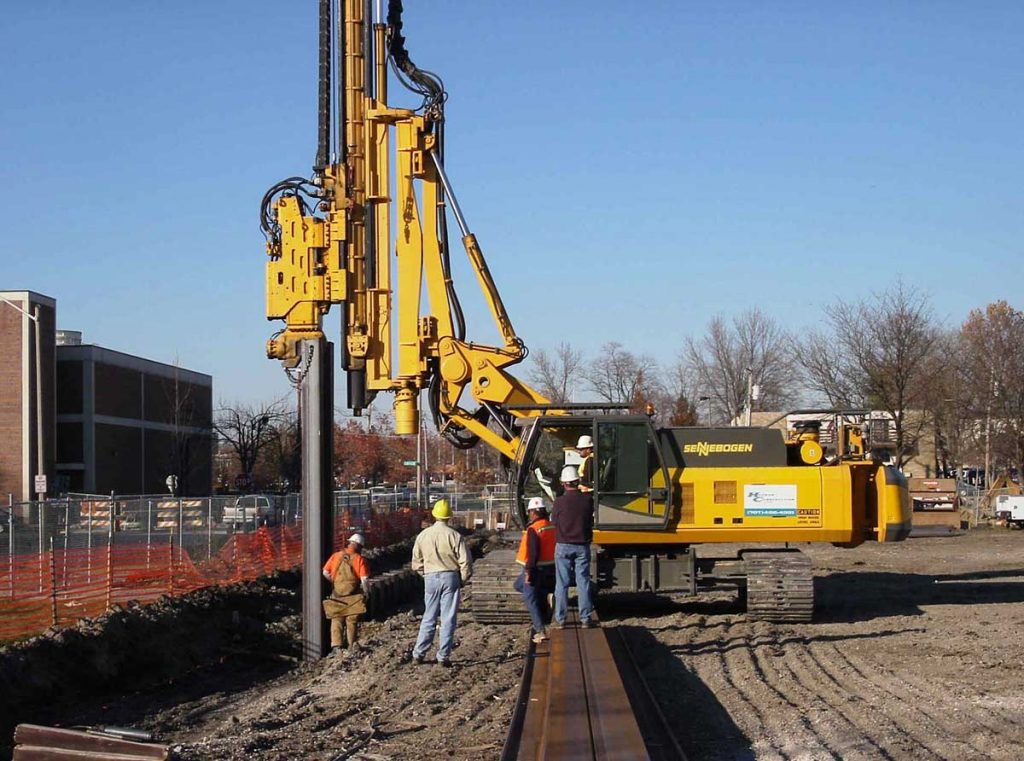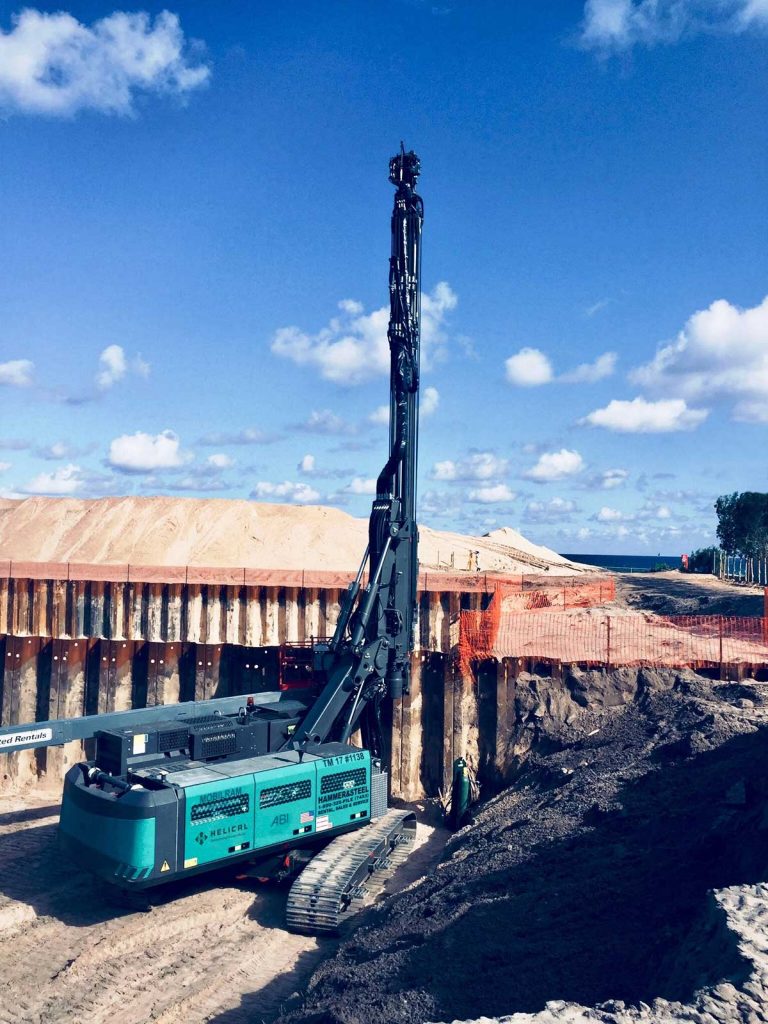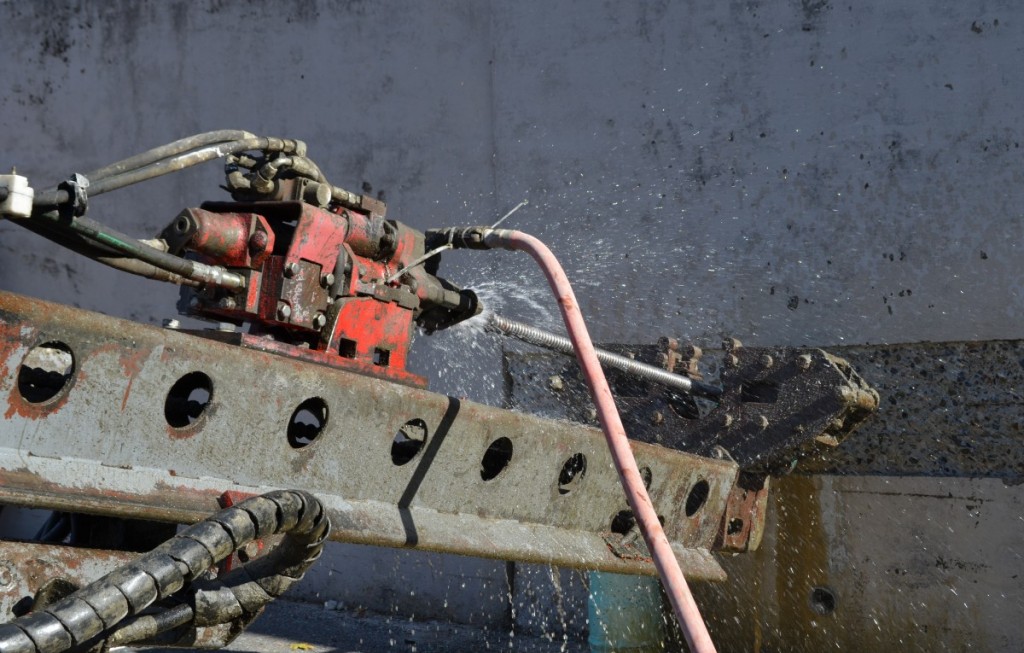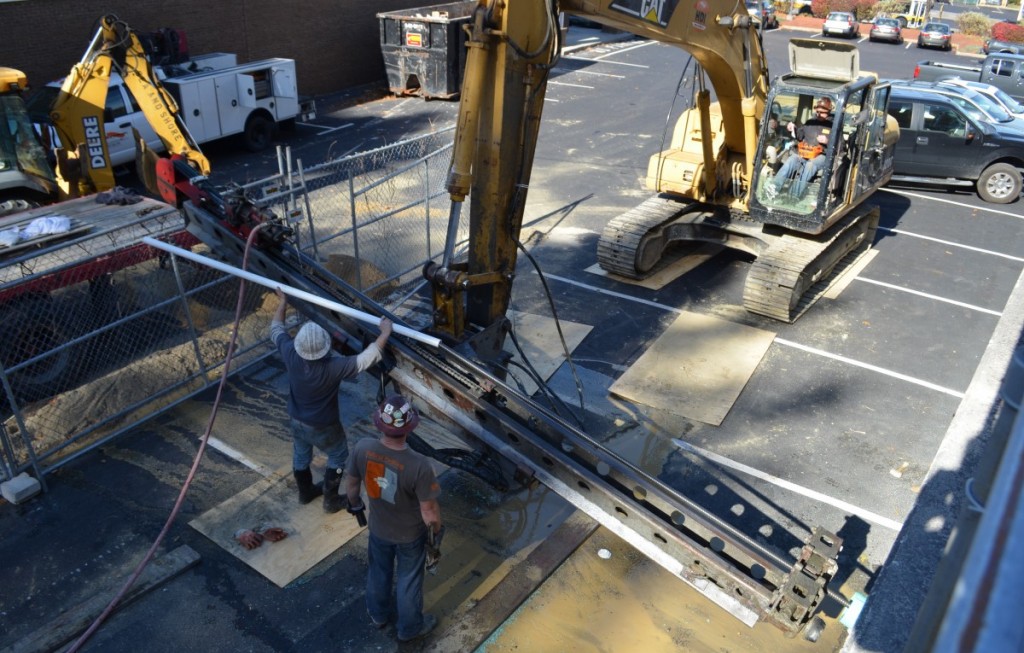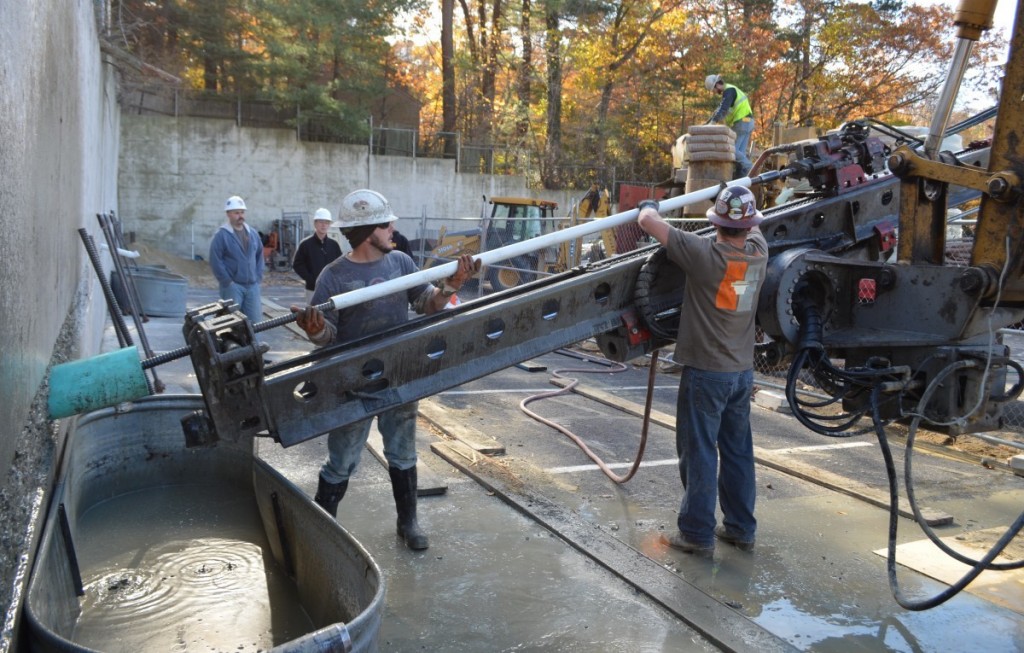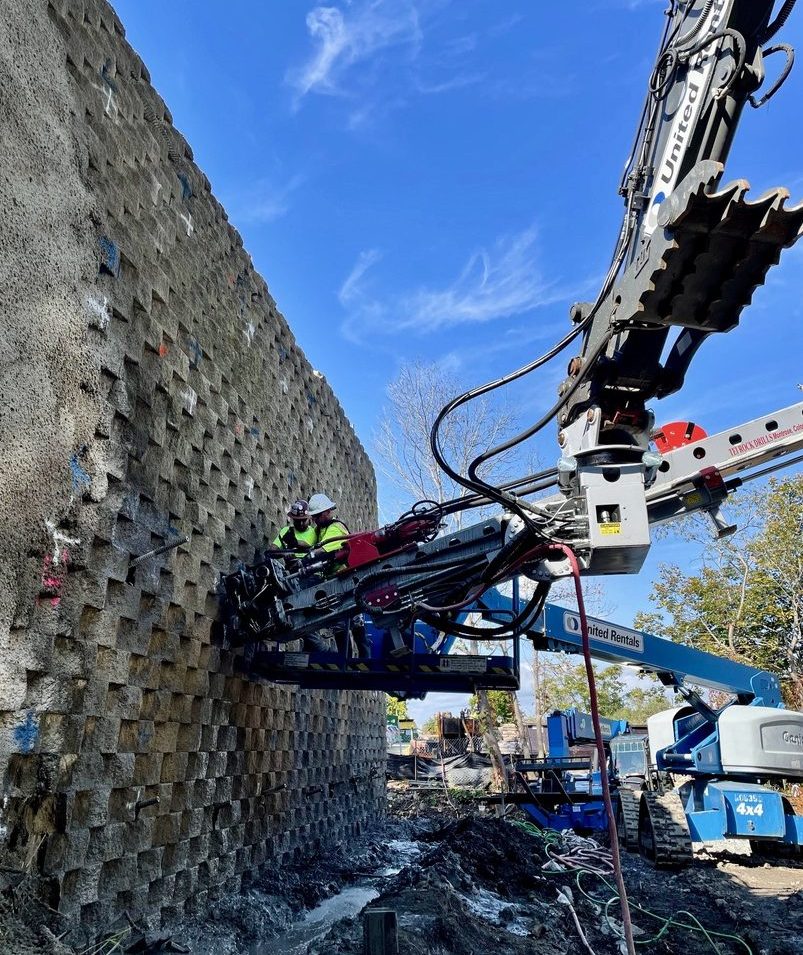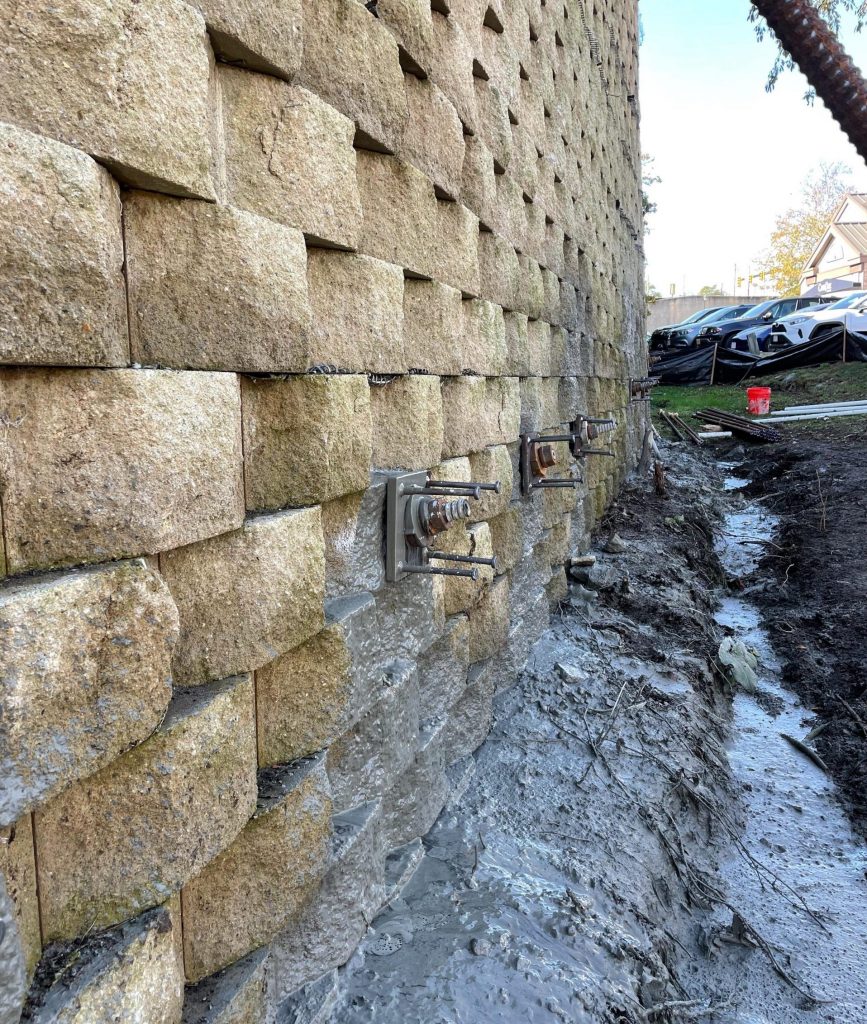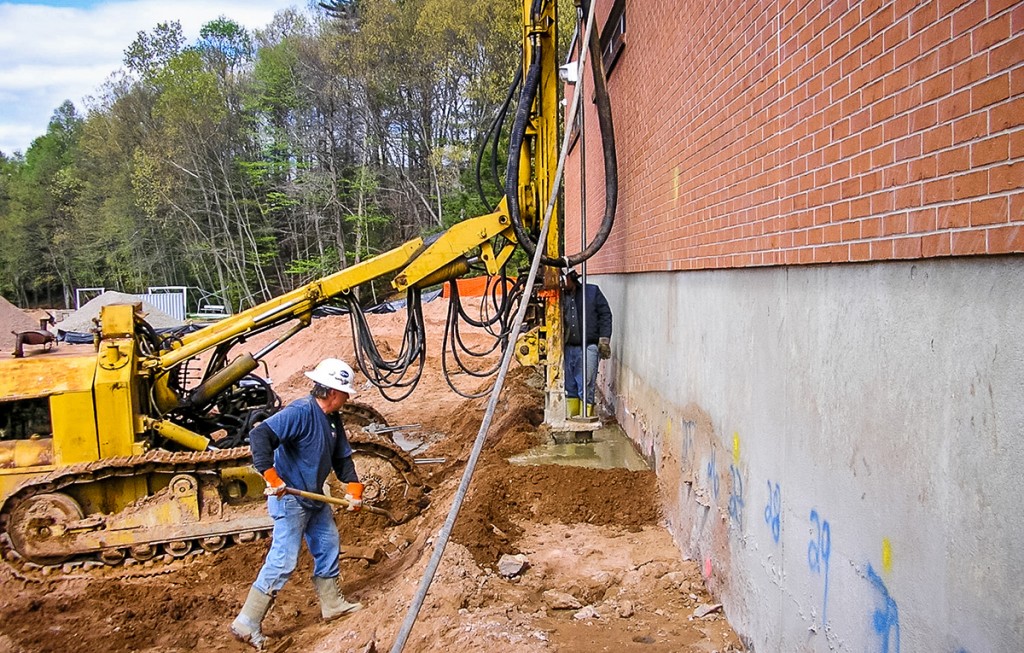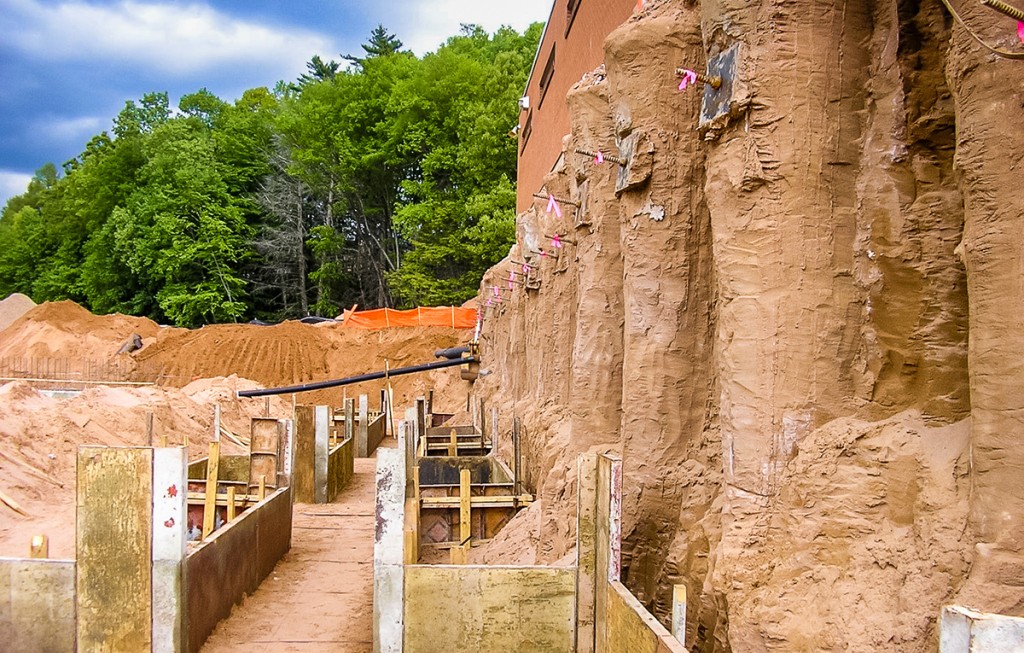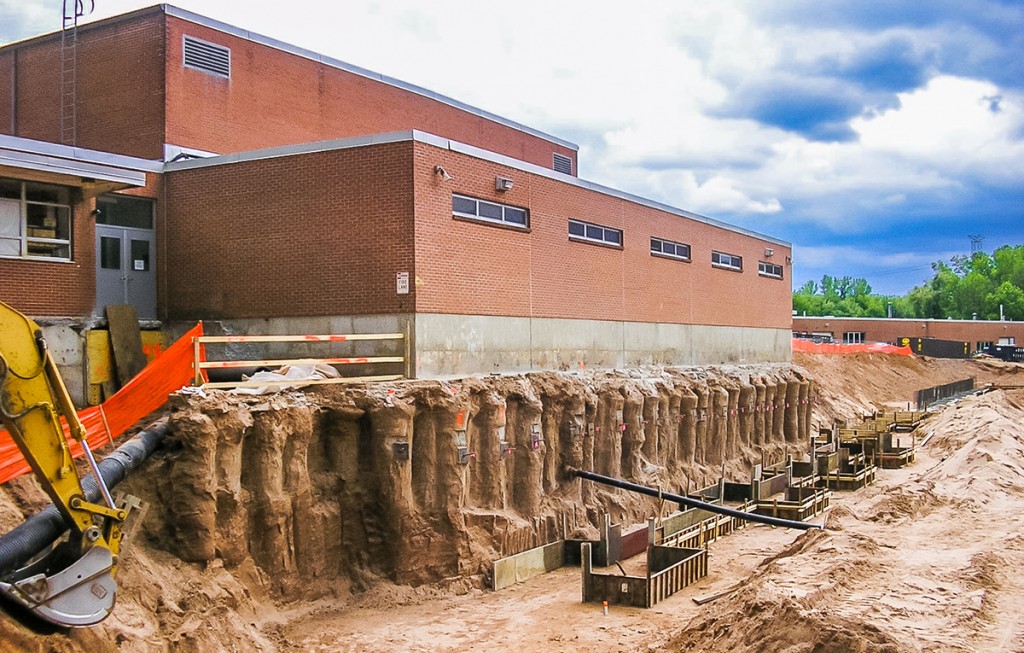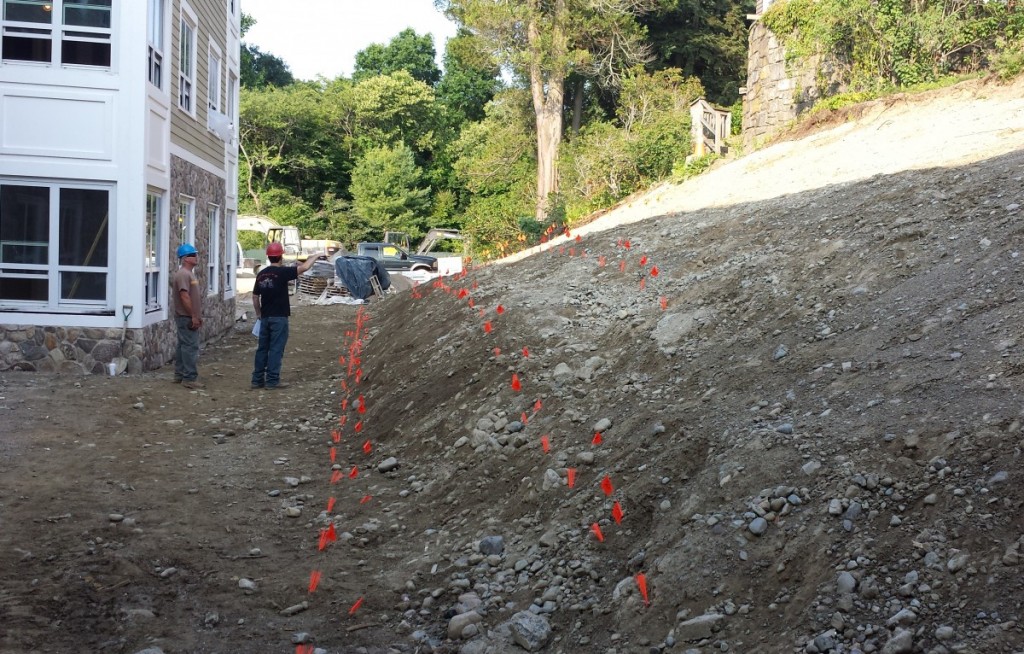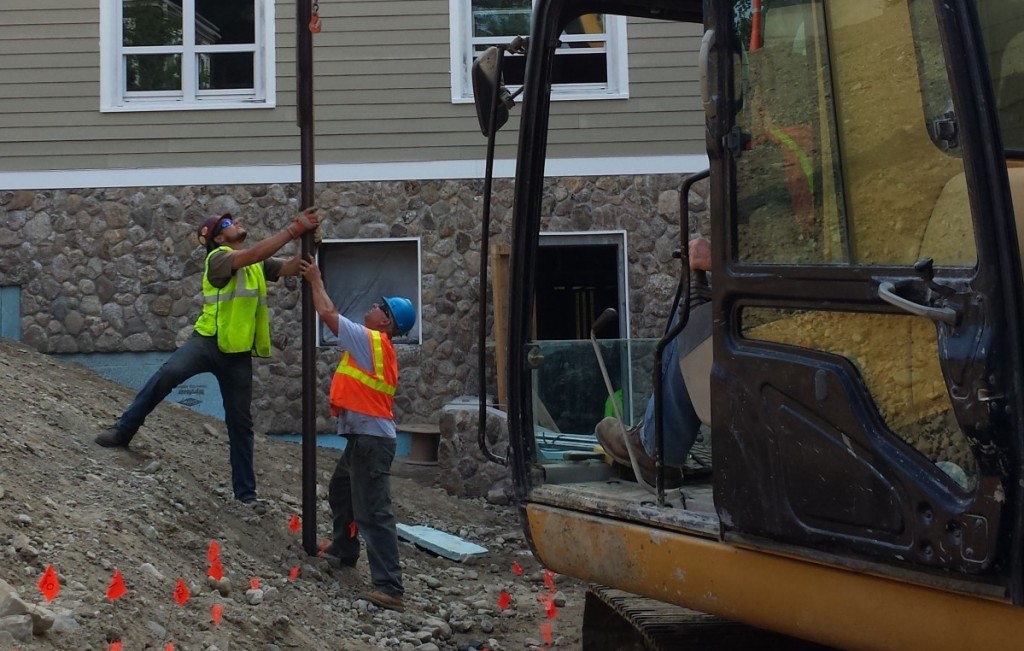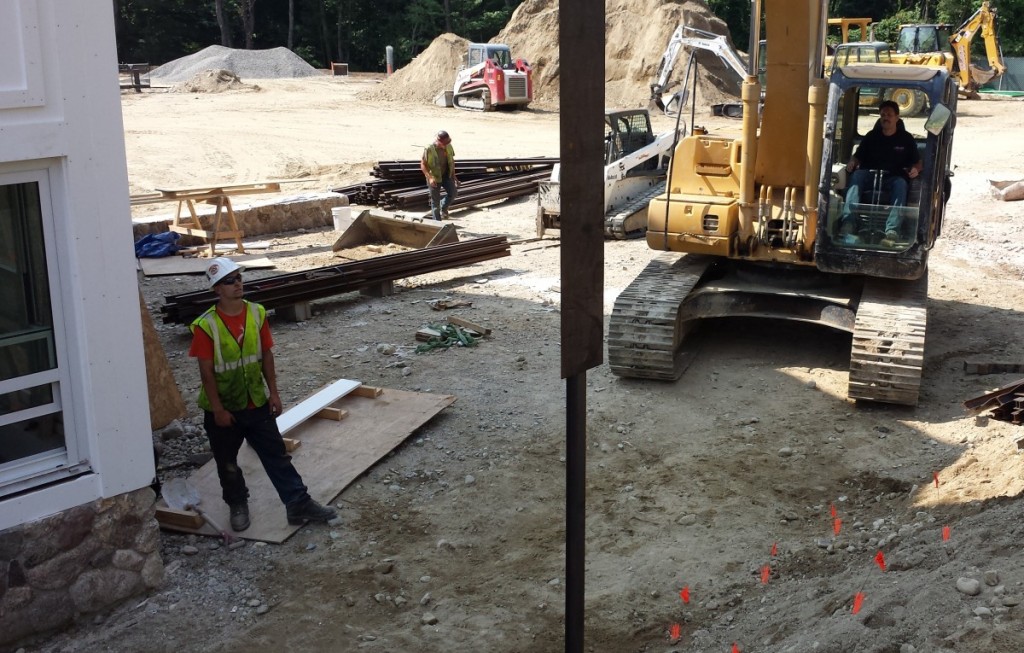Earth Retention
Earth Retention Techniques
Secant Pile Walls
Secant Pile Walls consist of a series of overlapped cast-in-place concrete cylinders that form a continuous wall. The diameter, spacing, depth and structural reinforcement of the cylindrical elements are engineered to meet specific project needs and subsurface site conditions. The walls can be used effectively to simultaneously perform a number of earth retention functions including:
-
-
- Temporary or Permanent Earth Support
- Foundation Support
- Groundwater and Seepage Control
-
In association with its international partners, Helical Drilling has developed the capabilities to install secant pile walls in a broad range of soil conditions with unsurpassed speed, accuracy, minimal disturbance and the ability to achieve tight tolerances at very close proximity to adjacent structures. Our construction process involves drilling and casting each cylindrical element in the secant pile wall configuration in a “single pass” using a cased drilling system, which guarantees tight overlap joints, uniformity, and a high-level quality finish. The modular nature of secant pile wall installation offers the versatility that is required to accommodate complex wall layouts and geometrical configurations.
View Our Case Studies & Related Projects >
Soldier Pile and Lagging Walls
Solider pile and lagging (SP&L) earth retention systems consist of closely-spaced vertical steel piles with horizontal lagging installed between the piles. Soldier piles are installed by: 1) driving (or vibrating) steel H-piles or 2) drilling steel pipe into the ground prior to excavation. Piles are installed at relatively close spacings (typically about 4 to 8 feet). Once pile installation is complete, lagging installation and excavation work can begin. The excavation work proceeds in concert with lagging installation in small segments (typically about 2 to 4 feet vertically). The lagging, typically consisting of timber, is installed horizontally between the vertical piles. The process of excavating and lagging continues segmentally as the total excavation depth increases. For shallow excavations, the SP&L system is often cantilevered. For deeper excavations, the SP&L system can be combined with tiebacks or internal bracing for increased system stability. Compared to driven sheet pile walls, SP&L earth retention systems can offer the following advantages: 1) more design flexibility with wall alignment, 2) no vibrations (when drilled steel pipe soldier piles are used), and 3) the ability to penetrate relatively dense or obstructed ground conditions (again, when drilled steel pipe soldier piles are used).
View Our Case Studies & Related Projects >
Sheet Pile Walls
Sheet pile walls consist of interlocked sections of relatively thin, steel sheeting that are installed in series along a predetermined alignment to form a continuous earth support wall. They are commonly used for temporary excavation support and/or a groundwater flow cutoff and can also be used to form seawalls, cofferdams, and bulkheads. Individual sheeting sections are generally 1.5- to 2.5-feet-wide and have interlocking edges. The sections are vibrated into the ground with a high-frequency vibratory hammer that is affixed to a large, tracked vertical mast rig. Sheet piles walls can generally be cantilevered for excavation heights up to 10 to 15 feet. Penetration depths for cantilever walls are typically at least 2 times the height of the excavation. For example, for a 10-foot-high sheeted excavation, the sheets would be driven at least 20 feet below the bottom of the excavation. For excavation depths that exceed 10 to 15 feet and/or where wall surcharge loads are relatively high, Tiebacks/Anchors or internal bracing can be added to help meet the project’s earth retention requirements.
View Our Case Studies & Related Projects >
Tiebacks
Tiebacks (or Anchors) are engineered tensile elements used to provide temporary or permanent lateral support for earth retention structures such as sheetpile walls, soldier pile and lagging walls, secant pile walls and slurry walls. Tiebacks are the preferred method of lateral support when congestion within the limits of the excavation must be minimized.
Tiebacks generally consist of a central steel bar (or strand tendon) surrounded by an annulus of grout. They typically derive their geotechnical capacity through side friction between the grout and surrounding soil or bedrock. The construction process varies depending on project specific conditions, but generally consists of: 1) drilling a hole into sound soil or bedrock (using casing as necessary), 2) inserting the central bar/tendon, 3) filling the hole with grout, 4) withdrawing the casing to create a bond zone between the grout and surrounding soil or bedrock, and 5) tensioning the bar/tendon in preparation for the structural connection with the excavation support wall.
Helical Piles can be used as Tiebacks/Anchors in certain soil conditions.
View Our Case Studies & Related Projects >
Soil Nailing
Soil nailing is an engineered earth retention method that utilizes an array of grouted tensile elements (“soil nails”) combined with a well-drained wire mesh and shotcrete facing to create a stable reinforced soil mass. Soil nailing can be used for temporary or permanent earth support applications and is particularly effective in limited-access areas and/or for irregularly-shaped excavations.
Soil nail wall construction is a staged “top-down” process where the soil is excavated and stabilized in 5- to 6-foot increments. The height of each increment is limited by the soils’ ability to temporarily remain stable as the soil nails are installed. Each nail is installed by drilling a near-horizontal hole into the soil, inserting a central steel bar, filling the hole with grout, and installing a steel bearing plate at the end of the bar. After the nails are constructed, drainage panels and wire mesh-reinforced shotcrete facing are installed. This incremental process is repeated until the final excavation depth is reached.
For permanent walls where an aesthetically appealing finish is required, the shotcrete facing can be sculpted and stained to meet architectural or landscaping requirements. Alternatively, precast facing panels can be used in lieu of sculpted/stained shotcrete.
View Our Case Studies & Related Projects >
Jet Grouting
Jet grouting is a ground improvement technique that improves unsuitable soils in-place and is used for underpinning existing foundations, constructing earth support walls, and constructing groundwater cutoff walls. The process of jet grouting involves advancing steel drill rods using a high-pressure bottom discharge water/grout jet, stopping the bottom-discharge once the predetermined design depth is reached, and then engaging a high pressure side-discharge grout jet that erodes and mixes the soil as the drill rod string is slowly rotated and gradually withdrawn. This process creates “soilcrete” jet grout columns with increased strength and reduced permeability.
View Our Case Studies & Related Projects >
Geopier SRT® Elements
Geopier SRT elements are used to stabilize new slopes, active slides, or dormant slides up to 15-feet-thick by effectively transmitting sliding forces down through the unstable soils and into an underlying dense soil or weathered bedrock layer. Each element consists of patented steel angle section with a rectangular bearing plate that is welded to the top of the section. The elements are installed in a staggered grid pattern with an impact or vibratoy hammer mounted on a tracked excavator. The closely spaced elements form a series of horizontal barriers where the soil arches between the plates, forming a continuous line of resistance against downslope movement and increasing the factor of safety against slope instability.
SRT® element installations are fast and allow for immediate stabilization without the need for extensive (and slow) earthwork and site disruption. The modular nature of the Geopier SRT system make it particularly effective for sites with constrained access.
View Our Case Studies & Related Projects >


